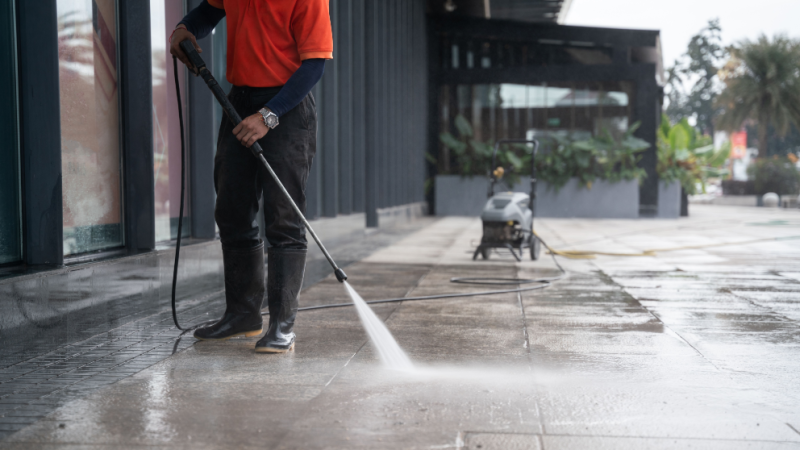Property maintenance: ensuring efficiency in 3 steps
Property Maintenance is a strategic and indispensable element in achieving energy saving and, above all, efficiency goals. But not only this. In order to continue producing the same benefits and advantages, every plant and redevelopment intervention must have an effective and efficient maintenance system. The diagnostic, design and implementation phases are nothing without the subsequent maintenance phase.
In fact, to optimise costs and benefits it is necessary to keep an eye on whether and how much the building’s systems consume and whether the energy benefits are the same as those hypothesised in the design phase.
As such, an aspect not to be overlooked is big data analysis and the use of modern technologies. Modern strategies in the field of facility management are now implemented, in most cases to ensure efficient management of real estate assets.
Today’s technologies make it possible to process information acquired in real time that can condition, and sometimes determine, decision-making processes at both strategic and operational levels. Let us look at the main aspects to be considered in order to ensure the efficiency of real estate properties.
1. Simulating property maintenance interventions
The creation of a predictive model of a property makes it possible to simulate the knowledge of each individual element and thus manage it in an automatic and structured manner. All the collected elements, the information and the data, become an integral part of the maintenance of a property or infrastructure once organised in a structured manner.
Predicting property maintenance costs
In this way, analyses and forecasts of operation and maintenance costs can also be worked into the project, both for the plant and building part. Carefully studying the building in relation to the services and activities that will be carried out within it, so as to verify compliance with the quality and efficiency standards required for building maintenance, constitutes a major advantage. By anticipating decision-making in maintenance activities, intervention times are significantly reduced through more detailed knowledge of the state of the building. It is at this preliminary stage that possible problems, which could later arise, are avoided.
2. Adopt a functional property maintenance strategy
There is no single way to carry out property maintenance. There are cases in which it is possible to wait for deterioration to occur, others in which it is necessary to act before the problem occurs, based on studies and forecasts.
Different property maintenance strategies
Preventive maintenance as a proactive category, is more efficient and functional, as the probability of failure, degradation or operation is reduced due to scheduled maintenance at defined intervals. There are various ways to apply this type of maintenance, but we generally consider the three main ones: cyclical preventive maintenance, carried out according to time intervals; condition-based maintenance, also carried out preventively, is implemented by monitoring certain parameters and intervening when these parameters are not met; finally, predictive maintenance, a variation of the previous one, is based on a calculation model and has the function of predicting when a malfunction will occur.
A good level of service efficiency is instead guaranteed by scheduled maintenance, carried out according to a predefined calendar. This is flanked by enhancement maintenance, which, on the basis of preventive analyses and with the involvement of staff, allows small changes to improve the maintenance level of the building.
The former includes corrective maintenance, which is carried out following the detection of a fault. In turn, it can be subdivided into subclasses: deferred maintenance, which can be postponed over time, pending compliance with the maintenance plan, or emergency maintenance, which must be carried out immediately to avoid worse consequences.
Over time, a form of integrated maintenance has taken hold, and is now widely used, compared to the previous modes. A recent concept of property maintenance, born to meet the needs of large companies, which require ever higher levels of efficiency.
3. Using technology in property maintenance
The greatest difficulty in the pursuit of building maintenance efficiency is the lack of knowledge and the limited amount of information concerning facilities, even when relying on simulations and a reasoned strategy.
Often, in addition to not knowing the main characteristics, there is no history and experiential memory of past interventions. On the other hand, there is important data, which cannot be disregarded, such as average element lifespan, their reliability, the failure frequency as well as the frequency and manner of preventive maintenance work to be carried out.
Modern facility management has turned to technology to make up for these shortcomings and increase efficiency. Building maintenance information systems, used in the forecast phase, were designed to compensate for the missing gaps: a body of standards, procedures and tools, that collects and processes the information required for maintenance management and facility monitoring.
Historical databases can thus be highlighted and then compared by processing them through software. Therefore, the computerisation of maintenance improves various aspects of the business: from the social to the industrial, but above all allowing the economic aspects to be better evaluated.
If you want to know more, contact us now!
 English
English

